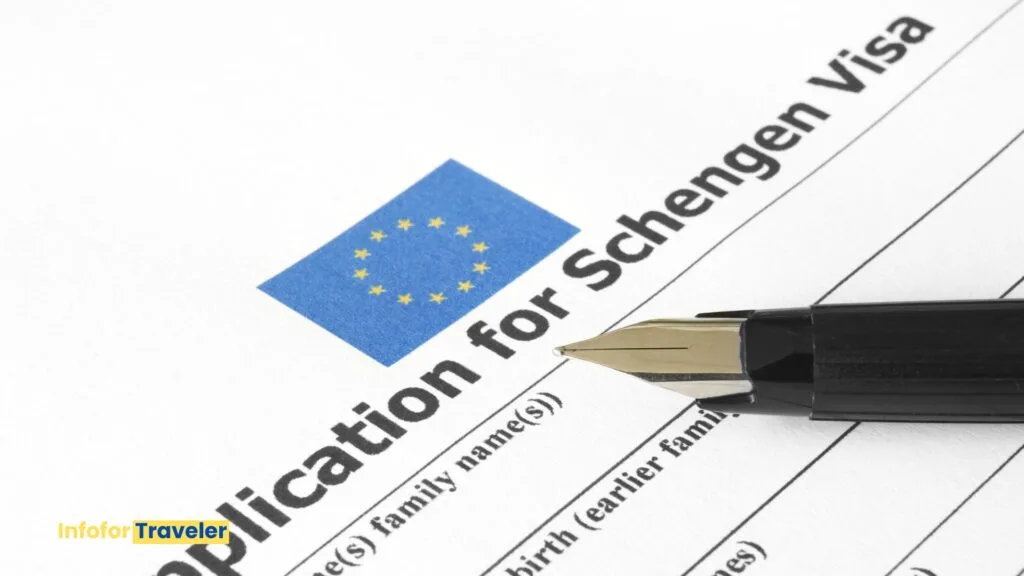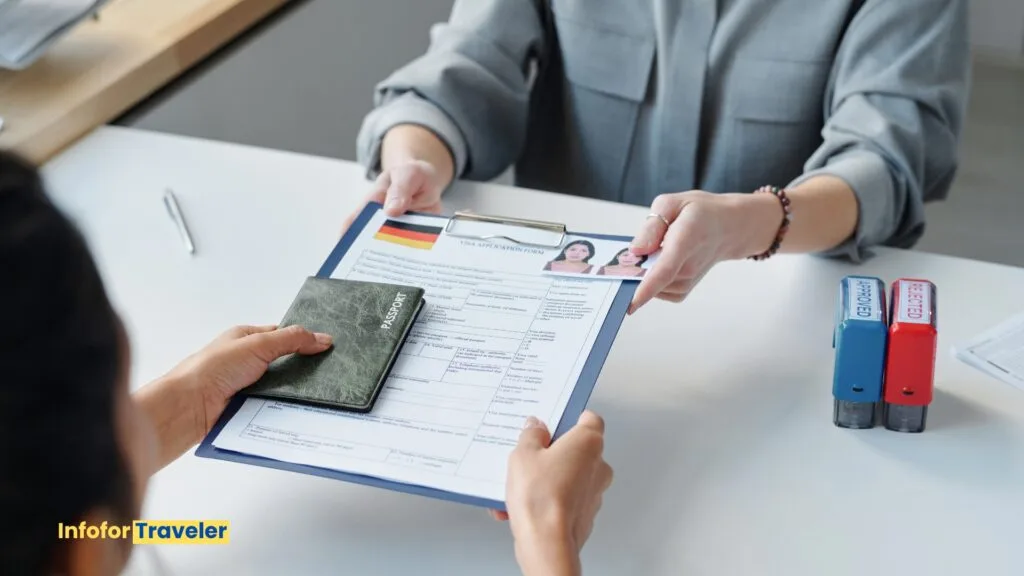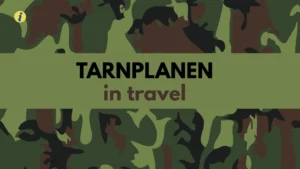Traveling to Europe has always been a dream for many Americans. However, with evolving visa regulations, it’s crucial to stay updated to ensure a seamless journey. In 2025, significant changes have been introduced to the Schengen visa digital application process, especially impacting U.S. citizens.
This guide provides an in-depth look into these changes, ensuring you’re well-prepared for your European adventure and How to apply for Schengen visa in 2025
Understanding the Schengen Visa Applications & Area
The Schengen Area comprises 27 European countries that have abolished internal borders, allowing free and unrestricted movement of people. This means travelers can move across member countries without undergoing border checks. Notable members include France, Germany, Italy, and Spain.
Recent expansions have seen Bulgaria and Romania partially adopting Schengen rules, accepting visas for air and sea entries but not land borders.
This unified travel policy has made Europe one of the most accessible regions in the world. However, despite its benefits, travelers must understand that staying beyond the permitted time or violating visa conditions can lead to penalties, including bans from future visits. Therefore, understanding the specifics of your entry and exit conditions is crucial.
Schengen Visa Applications & Introduction of ETIAS in 2025
A pivotal change in 2025 is the implementation of the European Travel Information and Authorization System (ETIAS). This system mandates that travelers from visa-exempt countries, including the U.S., obtain prior authorization before entering the Schengen Zone. The ETIAS aims to enhance security by pre-screening travelers, aligning with global practices similar to the U.S. ESTA system.
ETIAS Application Process:
- Online Application: Complete a form with personal details, passport information, and travel plans.
- Fee Payment: A fee of €7 is applicable, with exemptions for individuals under 18 or over 70.
- Processing Time: Most applications are processed within minutes, but some may take up to 96 hours.
- Validity: Once approved, ETIAS authorization is valid for three years or until the passport expires, whichever comes first.

Some Points Especially for American citizens:
- How to Apply: Fill out an online form with passport and travel details.
- Fee: €7 (exemptions for those under 18 or over 70).
- Processing Time: Typically within minutes; allow up to 96 hours.
- Validity: Three years or until passport expiry.
- Important: Mandatory for entry, boarding or entry may be denied without it.
It’s advisable to apply at least 96 hours before your departure to accommodate any unforeseen delays. While ETIAS is not a visa, failing to obtain authorization could result in denied boarding or entry at European ports of entry.
Schengen Visa Types and Their Relevance
While ETIAS caters to short-term travelers, those intending longer stays or specific purposes may require a Schengen visa. Understanding the different types is essential:
Uniform Schengen Visa (Type C)
This short-stay visa permits stays up to 90 days within a 180-day period for purposes like tourism, business, or family visits. Applicants must provide:
- Financial Proof: Demonstrating funds between €50–€75 per day of stay.
- Health Insurance: Coverage of at least €30,000.
- Accommodation Details: Proof of hotel bookings or host invitations.
- Return Ticket: Evidence of onward or return travel.
This visa is ideal for leisure travelers, business professionals, and individuals visiting family members in Europe. However, overstaying or engaging in unauthorized activities, such as employment, can result in severe consequences, including deportation or future visa denials.
National Schengen Visa (Type D)
Designed for long-term stays exceeding 90 days, this visa caters to individuals pursuing work, study, or family reunification. Requirements encompass:
- Sufficient Funds: Bank statements showing between €1,200 and €1,800 per month.
- Purpose-Specific Documents: Such as admission letters for students or work contracts for employees.
- Comprehensive Health Insurance: Minimum coverage of €50,000.
- Accommodation Proof: Valid housing arrangements.
This visa is essential for expatriates, international students, and professionals looking to work legally in Europe. Many applicants must also pass language proficiency tests or meet integration requirements specific to the country they plan to reside in.
Digital Transformation of Schengen Visas
By the end of 2025, the Schengen visa system is transitioning from traditional paper visas to digital versions. This move aims to streamline the application process, enhance security, and reduce forgery incidents. Travelers will access their visas through secure online platforms, making the process more efficient and environmentally friendly.
This digital shift is expected to simplify border crossings and improve document verification procedures. However, applicants should ensure their devices are secure and maintain digital backups of their visa approvals for ease of access.
Financial and Insurance Requirements
For financial and insurance Schengen visa applications, the applicants must demonstrate financial stability to cover their stay. The required amount varies between €50 and €75 per day, depending on the destination country. Additionally, mandatory health insurance with a minimum coverage of €30,000 for short stays and €50,000 for long stays is required. This ensures travelers can cover potential medical expenses during their visit.

Health insurance must cover emergency hospitalization, medical evacuation, and repatriation costs. Some countries have stricter financial requirements, and applicants should verify country-specific rules before submitting their applications.
Biometric Data Submission
To bolster security, all applicants are now required to submit biometric data, including fingerprints and facial scans. This measure aids in verifying identities and preventing fraudulent activities. The collected data is securely stored and used solely for identification purposes during the visa’s validity.
Biometric collection aims to reduce identity theft and ensure faster processing at border control points. Applicants must schedule in-person appointments at consulates or visa application centers for biometric submission.
Best Time for Schengen Visa Applications
Experts recommend submitting your Schengen visa applications at least three to four weeks before your planned trip. This timeframe accounts for potential processing delays, especially during peak travel seasons or in countries with high application volumes. In extraordinary circumstances, processing can take up to 60 days, so early application is prudent.
Travelers planning visits during the summer or winter holiday seasons should apply even earlier to avoid disruptions caused by backlogged applications.
Case Study: An American Traveler’s Experience
Jane, an avid traveler from New York, planned a month-long European tour in mid-2025. Unaware of the new ETIAS application for US citizens, she faced unexpected delays at the airport, leading to missed flights and additional expenses. This experience underscores the importance of staying updated with visa regulations and applying for necessary authorizations well in advance.
On the other hand, John, a business executive, successfully obtained a Schengen visa by preparing months in advance, ensuring all documentation was in order. His proactive approach saved him time and stress, highlighting the importance of early planning.
Pros and Cons of the 2025 Schengen Visa System
Pros
- Simplified Digital Process: Easier application submission and tracking.
- Enhanced Security: Biometric data ensures better identification.
- Longer Validity for ETIAS: ETIAS remains valid for three years.
- Increased Transparency: Clearer requirements and faster processing times.
Cons
- Stricter Requirements: Financial proof and biometric data may be challenging for some applicants.
- Processing Delays: High application volumes may lead to extended waiting times.
- Additional Costs: ETIAS and visa fees add to travel expenses.
Conclusion
Traveling to Europe in 2025 has never been more exciting, but it also requires careful planning to navigate the evolving Schengen visa and ETIAS requirements. With the digital transformation of visa applications, stricter security measures, and updated financial requirements, travelers must be proactive to avoid unnecessary delays or denials.
Whether you’re visiting for leisure, business, or study, ensuring that you have the correct documentation and apply well in advance will save you from potential headaches.
Understanding these changes is key to a smooth journey. Stay informed, prepare early, and embrace the new era of European travel with confidence. If you found this guide helpful, share it with fellow travelers and start your visa application today to ensure a seamless and unforgettable European adventure!
FAQs (People also want to know)
When will ETIAS become mandatory for US travelers?
Answer: ETIAS is expected to be mandatory starting in late 2026, following the implementation of the Entry/Exit System in October 2025.
Can I apply for a Schengen visa entirely online in 2025?
Answer: By the end of 2025, the EU aims to fully digitalize the Schengen visa application process, allowing applicants to submit forms and documents online.
What are the financial requirements for a Schengen visa in 2025?
Answer: Applicants must demonstrate financial means ranging between €50–€75 per day of stay, varying by destination country.
Is biometric data submission mandatory for Schengen visa applicants?
Answer: Yes, all applicants are required to submit biometric data, including fingerprints and facial images, to enhance security measures.
How does ETIAS differ from a traditional Schengen visa?
Answer: ETIAS is a travel authorization for visa-exempt travelers, valid for short stays up to 90 days, whereas a Schengen visa is required for longer stays or specific purposes like work or study.










